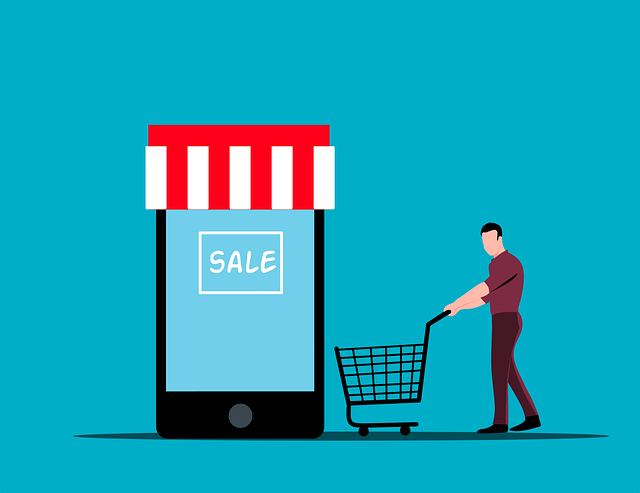Sales Demo Solutions

A SaaS demo is one of the most important conversion tools in your arsenal. Seeing a solution in action before making a final purchase decision helps companies determine whether your product/service is a good fit or not. If done well, the customer will gain insight into the value your product supplies and how you can address their pain points. If done poorly, the customer leaves convinced that your software isn’t up to the task.
In this article, we’ll teach you what a sales demo is, the different types of demos you can use, and the pros and cons of each.
What Is A Demo In Saas?
A demo (some referred to as a product or sales demo) is a presentation of your service or solution to a prospective customer. Sales demos can be held in person or remotely and are usually conducted by the account executive or sales rep. The demo offers the opportunity to showcase the value your product can bring to a customer in practice.
Where In The Sales Process Should You Implement Your Demo And Why?
There’s no hard and fast rule that determines when a demo should be held, but most demos take place after a lead has been qualified so that reps don’t waste too much of their time and focus demoing the solution to clients that won’t make a purchase. (Lead qualification refers to the process of determining the likelihood of whether or not a prospect will convert and become a paying customer).
Once you’ve determined that a prospect fits the profile, the solution is pitched via the demo. Most deals are lost or closed following the demo, which is why it is so integral to the sales process.
Different Types Of Demos
There are different types of demos that can be used when you are pitching to clients. The format you choose depends on the nature of your software, the client, and your objectives.
Live Demos
Live demos are one-on-one demonstrations with a salesperson or account executive from your company. They are scheduled and structured so that clients can provide some feedback or ask questions. These demos are held face-to-face or via a conference call tool. The sales rep can walk the prospect through the actual interface of the product in practice.
Pros Of Live Demos
- Live demos build trust because the prospect can see the solution in action.
- It’s easier to convey the benefits of the solution by showing it rather than speaking about it.
- The rep can show the prospects features that they are interested in specifically.
- Prospects can ask questions and steer the conversation.
Cons of Live Demos
- Live demos are hard to customize and personalize according to your clients’ needs and pain points. They usually require development and design input, which is not only time-consuming but costly.
- There’s also a high risk of technical failure or bugs. If there’s poor wifi reception, bugs, or even updates that take place at an inopportune moment, your software could crash in the middle of the demo.
Who Should Use Live Demos?
If you want to go this route, it’s important to determine who will showcase the demo. Is the person/team demoing the product capable of answering questions? If the founder or developers are needed to showcase the demo, is demoing worth their time and effort? If not, you may want to consider using methods like customized demos or pre-recorded demos that require less senior or resource-critical staff.
Pre-recorded Demos
Pre-recorded demos can be extremely useful if your software is simple to grasp or if you don’t have the manpower to conduct in-person demos. Other companies embed pre-recorded demos in their web pages as a marketing tool.
Pre-recorded demos are usually screencast videos that demonstrate the benefits of the product during a standard use case. Some companies embed them in the hero section of the home page or have a dedicated landing page just for demos.
Pros Of Pre-Recorded Demos
- These demos are easy and inexpensive to produce in-house.
- Pre-recorded demos are powerful marketing tools that encourage visitors to learn more about the product.
- Pre-recorded demos are failure-proof because they don’t take place live.
Cons of Pre-Recorded Demos
- Pre-Recorded demos aren’t personalized to the customers’ needs or pain points, which makes them less convincing.
- These demos may not answer the objections or questions customers may have.
- Customers can’t “test-drive” features they are interested in.
Who Should Use Pre-Recorded Demos?
If your product is simple enough to explain in video format and engaging enough to showcase the benefits without live interaction, this demo may be an option. You should decide how to handle questions or objections. If one single video can’t demonstrate the concept properly, consider creating several short, single-feature videos to break it down into easy-to-grasp explanations. If your product has several use cases, you should try to create as many as possible to appeal to various customers.
Real-Use Demos

Real-use demos let customers experiment with a version of your software in sandbox mode, effectively taking the solution for a test run before committing. This is often seen for non-complex tools like website builders or data formatting solutions. Sales reps or account executives may or not be involved.
The Pros Of Real-Use Demos
- Real-use demos are not time-intensive for sales reps.
- Real-use demos let customers see what it might be like to use the software on a daily basis.
- Customers feel a sense of ownership as they can use the product right away.
The Cons Of Real-Use Demos
- Setting up a real-use demo requires considerable coding, design, and deployment cost and time.
- Customers may find the software intimidating or run into a wall and give up using it.
- Bugs could easily slip in and ruin the experience for the customer.
Who Should Use a Real-Use Demo?
![]() If a solution is clear enough for someone who has never used it before to use without becoming frustrated or otherwise deterred, a real-use demo is a good option. However, there will be an investment cost that may not be worth the effort.
If a solution is clear enough for someone who has never used it before to use without becoming frustrated or otherwise deterred, a real-use demo is a good option. However, there will be an investment cost that may not be worth the effort.
Customized, Interactive Demos
Customized or personalized interactive demos use demo software solutions to create presentations tailor-made to specific customers, use cases, or industries within an encapsulated environment so that it isn’t subjected to technical failures or bugs. These can be shown live, remotely, or embedded in emails and websites. In many ways, this method combines the benefits of the other demo solutions covered here, making it highly effective.
Pros of Customized Demos
- Demos are personalized according to customers’ pain points or needs making it seem like the ideal solution to their problems.
- If you use a codeless platform, demos are scalable and can be duplicated or edited with ease without developer input.
- The demo software does the hard work, so there is no dependency on technical teams.
- Demos can be used as marketing tools.
- Customizable demos are failure-proof.
- Some demo software platforms allow you to collect additional insights about demo usage that can be used to make improvements.
Cons of Customized Demos
- There aren’t many providers on the market, so it will take time to find the right one that meets your needs.
- You and your sales team will have to learn how to use the demo platform as opposed to simply sharing a screen with prospects.
Who Should Use Customized Demos?
Any company can benefit from using customized demos because they are failproof, easy to execute and tailored to individual customer needs. It is important to choose the right platform for the task, though.
In Closing
The key to a successful demo is demonstrating value to your prospects. This means picking the most appropriate demo format and using it to address their pain points. But don’t make the mistake of trying to cover offer off every feature and benefit is going to take up too much time and won’t engage anyone’s attention. Personalize your demo so that it covers what matters the most to each client. Once you perfect the demo, closing the sale is much easier.
Now you’re familiar with different product demo formats, check out real product demos in action in our review section.
